Simply Moving The Eyes Triggers The Eardrums To Move Too, Says A New Study By Duke University Neuroscientists.

Simply moving the eyes triggers the eardrums to move too, says a new study by Duke University neuroscientists.
The researchers found that keeping the head still but shifting the eyes to one side or the other sparks vibrations in the eardrums, even in the absence of any sounds.
Surprisingly, these eardrum vibrations start slightly before the eyes move, indicating that motion in the ears and the eyes are controlled by the same motor commands deep within the brain.
Continue Reading.
More Posts from Theperpetualscholar and Others
What's the best book you've read lately? And what's your favorite anthro book?
Well I’ve really only read one book lately, and it’s very good: Fields of Combat by Erin P. Finley. It’s a medical anthro take on PTSD in veterans returning from combat in the Middle East. I highly recommend it. (For fun I usually read fantasy like Terry Pratchett and Jim Butcher, just so y’all know I do have fun sometimes lol.)
As for my favorite anthro book, that’s a tough one since most of my books are more technical manuals and I’ve only read excerpts of cultural theory books. One I really liked though was Righteous Dopefiend by Bourgois and Shonberg. It’s about heroin addiction in the homeless of San Francisco and brings in all kinds of great theory from writers like Bourdieu and Foucault (I’m always a slut for Foucault).
Next I’ll be flipping through Digging for the Disappeared and Disturbing Bodies, both of which examine the forensic anthropologist’s role not only in recovering, identifying, and repatriating remains from genocide and war crimes, but how we relate to and work with the survivors. I’ll be reporting back on those once I make some headway.
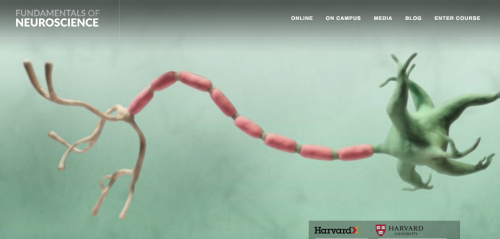
Harvard University offers a completely free online course on the Fundamentals of Neuroscience that you can get a certificate for successfully completing and which requires nothing other than basic knowledge in Biology and Chemistry. This excites me! Here’s the website





The Field Museum’s Economic Botany collection contains everything from a seed bank (literally vials upon vials of organized seeds), to hats made out of various grasses and straw material, musical instruments and shoes made from certain trees and barks, stalks of wheat, cobs of corn, bags of tea, dyes, medicines. Some of the items are decades old, and a large portion date back to the 1893 World’s Fair, when the trade and sale of such products was essential to industry growth.
This is a collection about the relationship between people and plants, documenting our use and interactions with items we’ve grown and harvested. It’s botanical as much as it is anthropological: the variety of uses for plants that people have discovered and created over thousands of years is staggering and astounding. As we continue to move towards automated agriculture and become less removed from the direct sources for our food and raw materials, I am grateful and intrigued that we may look into a jar of cherry syrup from the 1890′s and gain a bit more knowledge about the way we used to live.
Pictures:
A jar of cherry syrup from Guyana, 1893
A variety of pasta products, presented by the National Macaroni Association, 1920′s
Tortillas from Mexico, 1901
Sugars from Egypt, 1904
Maize from Brazil, 1948-1949
See more about the Economic Botanical Collection on The Brain Scoop!

We’re used to radiation being invisible. With a Geiger counter, it gets turned into audible clicks. What you see above, though, is radiation’s effects made visible in a cloud chamber. In the center hangs a chunk of radioactive uranium, spitting out alpha and beta particles. The chamber also has a reservoir of alcohol and a floor cooled to -40 degrees Celsius. This generates a supersaturated cloud of alcohol vapor. When the uranium spits out a particle, it zips through the vapor, colliding with atoms and ionizing them. Those now-charged ions serve as nuclei for the vapor, which condenses into droplets that reveal the path of the particle. The characteristics of the trails are distinct to the type of decay particle that created them. In fact, both the positron and muon were first discovered in cloud chambers! (Image credit: Cloudylabs, source)
Fun fact: Egyptian gods do not have ‘animal heads’. The depictions of gods are meant to contain a duality, as is important in Egyptian Religion (life/death, red land/black land, chaos/order, human/animal). So when you see, say, Anubis with a man’s body and a Jackal head it represents both his human form and his Jackal form, meaning he might appear in either form. But never as a human with a Jackal head. That is only something you’d see on temple walls for the duality aspect.






Revising like.
Subjects shown: Advanced dynamics, vibrations and waves, properties of matter, electricity and magnetism. All first year.
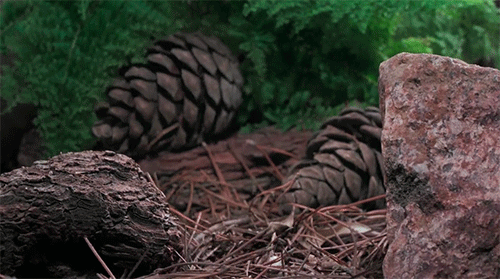
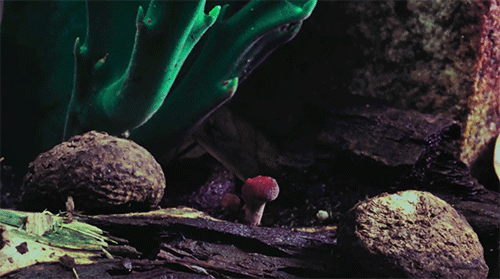
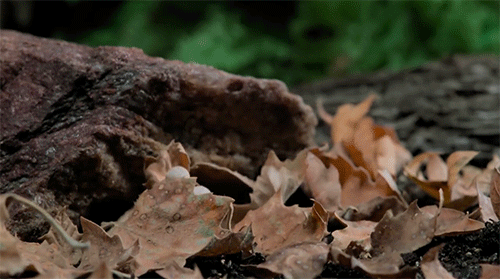
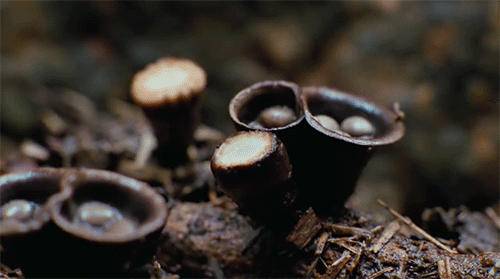
Fantastic Fungi (2019)








What makes fireworks colorful?
It’s all thanks to the luminescence of metals. When certain metals are heated (over a flame or in a hot explosion) their electrons jump up to a higher energy state. When those electrons fall back down, they emit specific frequencies of light - and each chemical has a unique emission spectrum.
You can see that the most prominent bands in the spectra above match the firework colors. The colors often burn brighter with the addition of an electron donor like Chlorine (Cl).
But the metals alone wouldn’t look like much. They need to be excited. Black powder (mostly nitrates like KNO3) provides oxygen for the rapid reduction of charcoal © to create a lot hot expanding gas - the BOOM. That, in turn, provides the energy for luminescence - the AWWWW.
Aluminium has a special role — it emits a bright white light … and makes sparks!
Images: Charles D. Winters, Andrew Lambert Photography / Science Source, iStockphoto, Epic Fireworks, Softyx, Mark Schellhase, Walkerma, Firetwister, Rob Lavinsky, iRocks.com, Søren Wedel Nielsen
Top 10 Most Uncomfortable Physics Facts
While physics can show us amazing things about our universe, it doesn’t always agree with how we think things should work. Sometimes, physics can be very counter-intuitive, and often unsettling. So, here’s my list of physics facts that can be a bit unnerving.
10: Weight doesn’t matter
If it wasn’t for air resistance, everything would fall at exactly the same speed. If you let go of a hammer and a feather from the same height at the same time on the Moon, they would hit the ground simultaneously.
9: Gyroscopic precession
It doesn’t matter how much you know about physics; gyroscopes are weird. The way they seem to defy gravity makes you rethink everything you know about physics, despite being fairly simple toys. Still, it’s all just Newton’s laws of motion.
8: Neutrinos and dark matter
We like to think that we can interact with most of the world around us, but this couldn’t be further from the truth. Neutrinos and dark matter are passing through your body right now, as if you weren’t even there. The fact that 65 billion neutrinos pass through each square centimeter of your body every second is weird enough, who knows what we’ll learn about dark matter.
7: Photons are particles
Light travels like a wave, but can only interact like a particle. It can interfere and have a frequency, but it can only take and give energy in discrete quantities. It behaves like nothing else in our macroscopic world, and can be very difficult to imagine.
6: Electrons are waves
We’ve established how photons act like waves and particles, but surely massive particles act normally. Nope! Even electrons have wave-like properties. In fact, everything acts like a wave! Except these waves come in discrete quantities, which we’ll call particles. This won’t get confusing.
5: E=mc^2
Einstein’s most famous contribution to physics states that matter is simply another form of energy, which has very profound consequences. A wound-up Jack-in-a-box would weigh ever so slightly more than a released Jack-in-a-box, due to the potential energy stored within.
4: Time is relative
The core of special relativity states that time passes differently for different observers. If you took a trip to Alpha Centauri at 99% the speed of light, everyone on Earth would see the trip take 4.4 years, while you would only experience 7.5 months. Time travel is real!
3: The (not so empty) vacuum
Something can be created from nothing, as long as it goes right back to being nothing quickly. In seemingly empty space, particles pop in and out of existence all the time as a result of the uncertainty principle. Not to mention, space is inflating at an accelerated rate due to “dark energy”. To the vacuum, the law of conservation of energy is more of a suggestion.
2: c is the fastest speed
Another important point in special relativity is that nothing could ever go faster than light. This doesn’t sit well with a lot of people, but the math doesn’t lie. To even get something with mass to travel at the speed of light would require infinite energy. Even if you somehow get around this, there are just too many mathematical problems with superluminal travel. Like it or not, the universe has a speed limit.
1: The cat is dead and alive
How could it not be this? The nature of quantum mechanics allows for objects to take on two seemingly contradictory states in a ‘superposition’. An electron can be in two places at once, or in a more extreme example, a cat can be both dead and alive. Of course, this weird property goes away once someone makes an observation. It’s as if there are tiny physics trolls messing with nature whenever we’re not looking.
Of course, there’s plenty more unsettling physics facts, like the space-bending nature of general relativity, or the “spooky action at a distance” that is quantum entanglement, but these are my top 10. I’d like to hear any unsettling physics facts you think I’ve missed, though!

Happy #NationalWineDay! Here’s some red wine chemistry: http://wp.me/p4aPLT-hz
-
 ekshoesworld liked this · 4 years ago
ekshoesworld liked this · 4 years ago -
 thisisnotkayla4 reblogged this · 5 years ago
thisisnotkayla4 reblogged this · 5 years ago -
 thisisnotkayla4 liked this · 5 years ago
thisisnotkayla4 liked this · 5 years ago -
 stormphoenix reblogged this · 5 years ago
stormphoenix reblogged this · 5 years ago -
 thelonelyqueenofthenight liked this · 5 years ago
thelonelyqueenofthenight liked this · 5 years ago -
 anime-food-and-more reblogged this · 5 years ago
anime-food-and-more reblogged this · 5 years ago -
 puddin-pops-for-winter-roses reblogged this · 5 years ago
puddin-pops-for-winter-roses reblogged this · 5 years ago -
 18th-angel-elias reblogged this · 5 years ago
18th-angel-elias reblogged this · 5 years ago -
 18th-angel-elias liked this · 5 years ago
18th-angel-elias liked this · 5 years ago -
 tonimichelleluttrell liked this · 5 years ago
tonimichelleluttrell liked this · 5 years ago -
 princessjouissance reblogged this · 6 years ago
princessjouissance reblogged this · 6 years ago -
 theinquisitivereceptacle liked this · 6 years ago
theinquisitivereceptacle liked this · 6 years ago -
 phildawg24 reblogged this · 6 years ago
phildawg24 reblogged this · 6 years ago -
 iwantsweetrevenge liked this · 6 years ago
iwantsweetrevenge liked this · 6 years ago -
 nono6613-blog liked this · 6 years ago
nono6613-blog liked this · 6 years ago -
 strangecalzoneroadpatrol-blog liked this · 6 years ago
strangecalzoneroadpatrol-blog liked this · 6 years ago -
 mysterysciencegirlfriend3000 reblogged this · 6 years ago
mysterysciencegirlfriend3000 reblogged this · 6 years ago -
 bellsbey-blog reblogged this · 6 years ago
bellsbey-blog reblogged this · 6 years ago -
 3nderstar reblogged this · 6 years ago
3nderstar reblogged this · 6 years ago -
 geneexpressions reblogged this · 6 years ago
geneexpressions reblogged this · 6 years ago -
 iamhillareas liked this · 6 years ago
iamhillareas liked this · 6 years ago -
 snakelily liked this · 6 years ago
snakelily liked this · 6 years ago -
 geiszler liked this · 6 years ago
geiszler liked this · 6 years ago -
 maverick-ornithography liked this · 6 years ago
maverick-ornithography liked this · 6 years ago -
 rachelbeyou reblogged this · 6 years ago
rachelbeyou reblogged this · 6 years ago -
 rachelbeyou liked this · 6 years ago
rachelbeyou liked this · 6 years ago -
 rowan-reads liked this · 6 years ago
rowan-reads liked this · 6 years ago -
 midgardgurl liked this · 6 years ago
midgardgurl liked this · 6 years ago -
 secretacent liked this · 6 years ago
secretacent liked this · 6 years ago -
 lonely-lamb liked this · 6 years ago
lonely-lamb liked this · 6 years ago -
 blindedbybooks reblogged this · 6 years ago
blindedbybooks reblogged this · 6 years ago -
 studiousmedic reblogged this · 6 years ago
studiousmedic reblogged this · 6 years ago -
 notosct liked this · 6 years ago
notosct liked this · 6 years ago -
 kraftdinnerlang liked this · 6 years ago
kraftdinnerlang liked this · 6 years ago -
 biochemists liked this · 6 years ago
biochemists liked this · 6 years ago -
 watchtachhatzl liked this · 6 years ago
watchtachhatzl liked this · 6 years ago -
 franklloydweft liked this · 6 years ago
franklloydweft liked this · 6 years ago -
 iridium2013 liked this · 6 years ago
iridium2013 liked this · 6 years ago -
 qqqjelly liked this · 6 years ago
qqqjelly liked this · 6 years ago -
 tisitheone liked this · 6 years ago
tisitheone liked this · 6 years ago